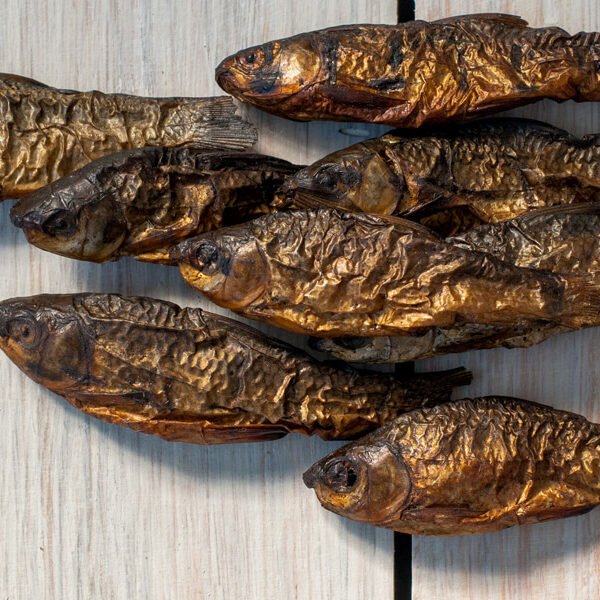3 Processing methods of drying fish, cooking recipe and its health benefits

Different steps to dry Fish
The technique employed to preserve it by eliminating moisture, which hinders the growth of bacteria and other microorganisms that lead to spoilage. Various traditional methods are exist, such as air drying, sun drying, and smoking. Each method operates as follows:
Air:
The fish is hung in a well-ventilated space to allow air circulation and aid in moisture evaporation. Typically, the fish is cleaned, gutted, and sometimes salted before being hung for drying. Depending on the climate and environmental conditions, air drying can take from several days to a few weeks to finish. It is crucial to shield the fish from flies and other pests during the drying phase.
Sun:
It is akin to air drying but involves exposing the fish to direct sunlight to expedite the process. The cleaned fish is laid out on racks or mats in an open area to receive ample sunlight.
It can be faster than air drying and may require several days to complete, contingent on weather conditions. Regularly turning the fish is important to ensure uniform drying and prevent spoilage.
Smoking:
Smoking is an alternative method that adds a unique flavor and aids in preservation.
The fish is cleaned, gutted, and sometimes salted before being hung in a smokehouse or smoker. A fire is ignited using wood chips or sawdust, and the smoke produced from the burning wood is utilized to slowly cook and dry the fish. Smoking can last from several hours to a few days, depending on the fish’s size and type, as well as the desired level of smokiness. The smoked fish can be consumed as is or further dried for extended storage.
It is vital to thoroughly clean and handle the fish to prevent contamination and ensure food safety. Moreover, regulating factors like temperature, humidity, and airflow during the drying process is crucial for producing top-quality dried fish.
Recipe
Rehydrate the Fish:
Begin by rinsing the product under cold water to eliminate any debris or excess salt. Next, place the dry fish in a bowl or pot and cover it with water. Allow it to soak for a minimum of 2-3 hours or overnight in the refrigerator. This process will rehydrate the fish and decrease its saltiness (Marine Fish).
Remember to change the water a few times during soaking to aid in removing excess salt (Marine Fish).
Boil the Fish: (Optional)
After the soaking period, transfer the fish to a pot and cover it with fresh water. Bring the water to a boil over medium-high heat. Once boiling, lower the heat to a simmer and let the fish cook for approximately 15-20 minutes, or until it reaches a tender consistency. The cooking duration may vary based on the thickness of the fish.
Seasoning (Optional):
For added flavor, you have the option to season the fish with your preferred spices. Common choices include garlic, ginger, onions, chili powder, turmeric, and coriander powder. Add these spices to the pot while the fish is simmering.
Frying (Optional):
If you desire a crispy texture, consider frying the rehydrated fish after boiling. Heat some oil in a pan over medium heat. Once the oil is hot, carefully add the boiled fish to the pan and fry it until it achieves a golden brown, crispy exterior on both sides. After frying, remove the fish from the pan and place it on a paper towel to absorb any excess oil before serving
Drain and Serve:
Once the fish is fully cooked and tender, remove it from the pot and drain any excess water. You can serve the cooked fish as is, or you can further prepare it by frying or incorporating it into curries or stews.
Health Benefits
Dry fish offers numerous benefits, but it is important to consume them in moderation due to their high sodium content. Here are some potential health advantages of dry fish:
- Abundant Protein: Sukuti is an excellent source of high-quality protein, which is vital for tissue building and repair in the body. Protein also plays a crucial role in supporting muscle growth, immune function, and overall well-being.
- Omega-3 Fatty Acids: Certain varieties of dry fish, such as salmon and mackerel, are rich in omega-3 fatty acids. These beneficial fats have been associated with a reduced risk of heart disease, improved brain function, and decreased inflammation in the body.
- Essential Vitamins and Minerals: It contains a range of essential vitamins and minerals, including vitamin D, vitamin B12, and calcium. Vitamin D is important for bone health and immune function, while vitamin B12 is crucial for nerve function and red blood cell production. Calcium is essential for maintaining strong bones and teeth.
- Low Saturated Fat: Sukuti is generally low in saturated fat, which is known to increase the risk of heart disease and other health issues when consumed excessively. Opting for lean protein sources like dry fish can promote heart health and overall well-being.
- Extended Shelf Life: The dry fish removes moisture and inhibits the growth of bacteria and other pathogens, resulting in a long shelf life. This can be advantageous in regions where fresh fish may not be readily available throughout the year.
Contact and Order
If you need dry river fish please contact at https://www.facebook.com/Natrajofc/
or Direct call at 00977-9813896766. Kathmandu, Nepal


I need Dry fish 1 kg